
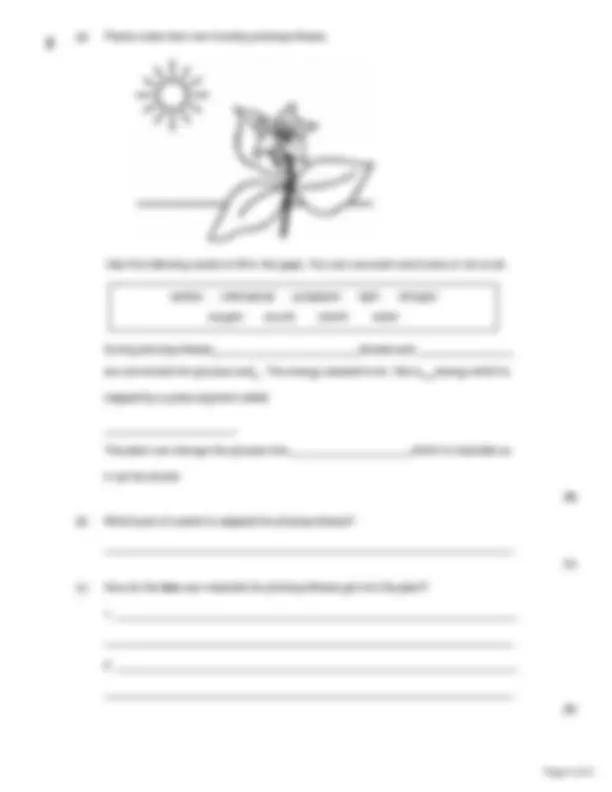
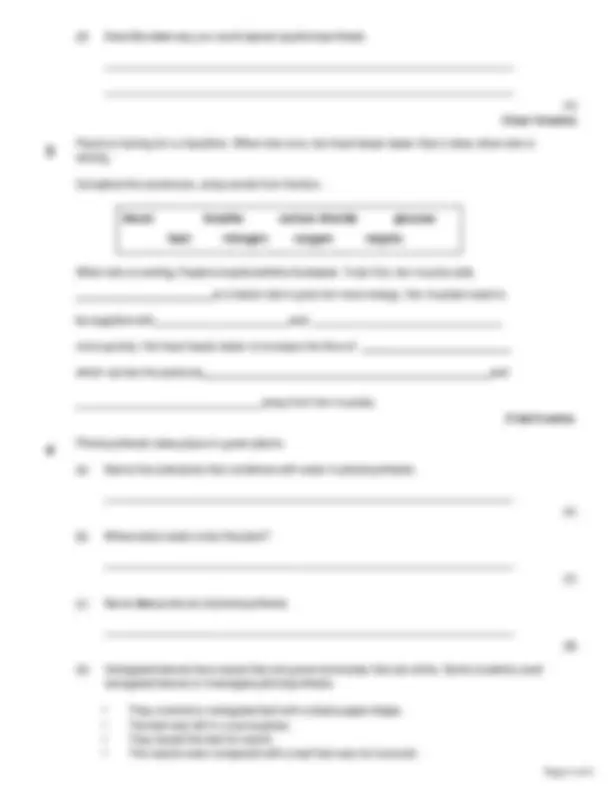
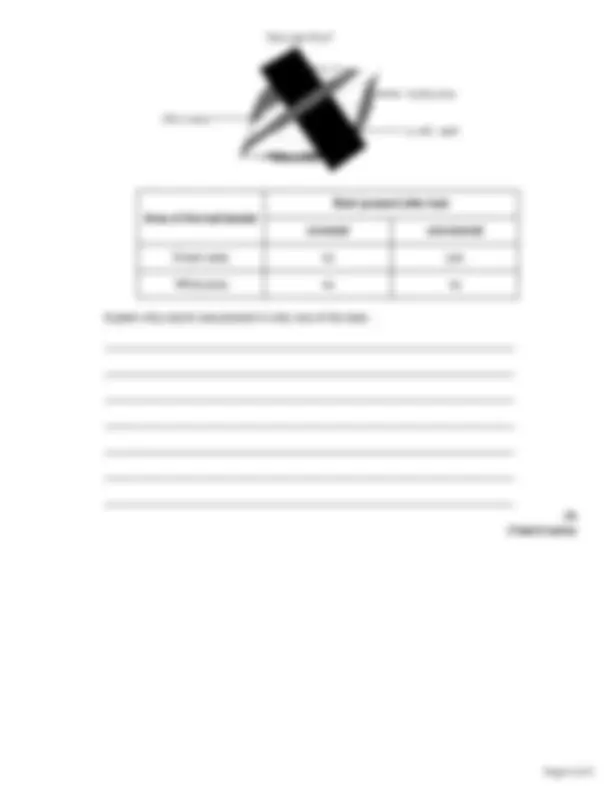
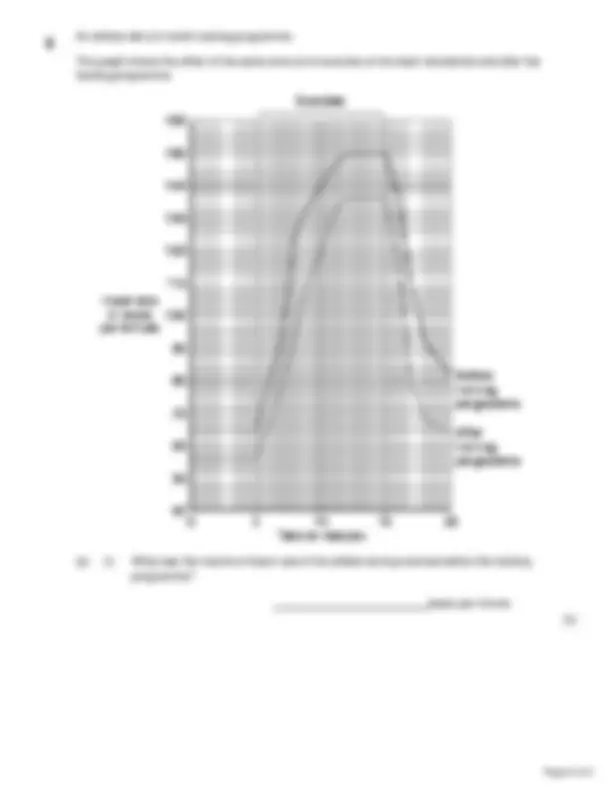
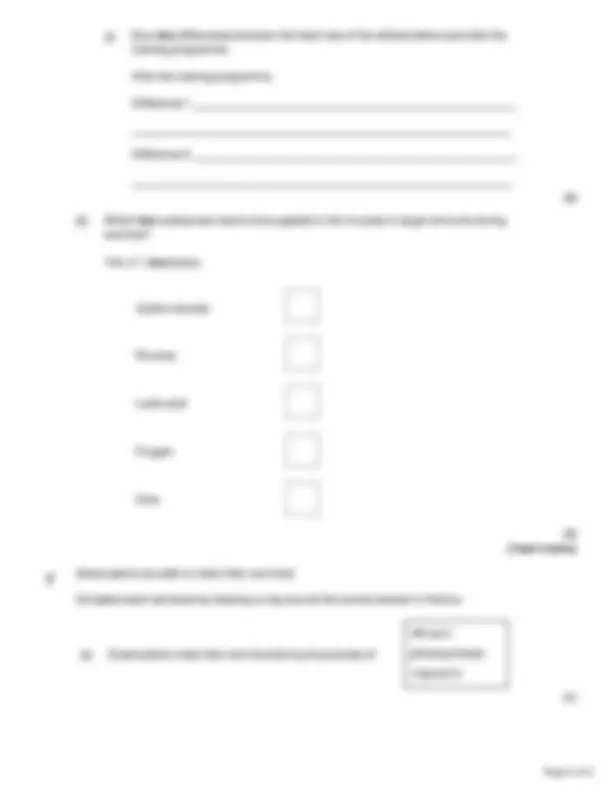
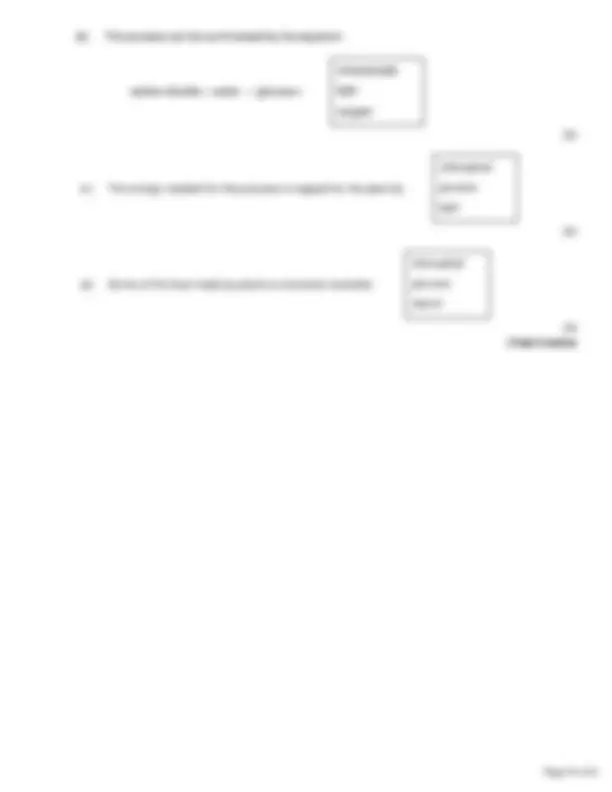
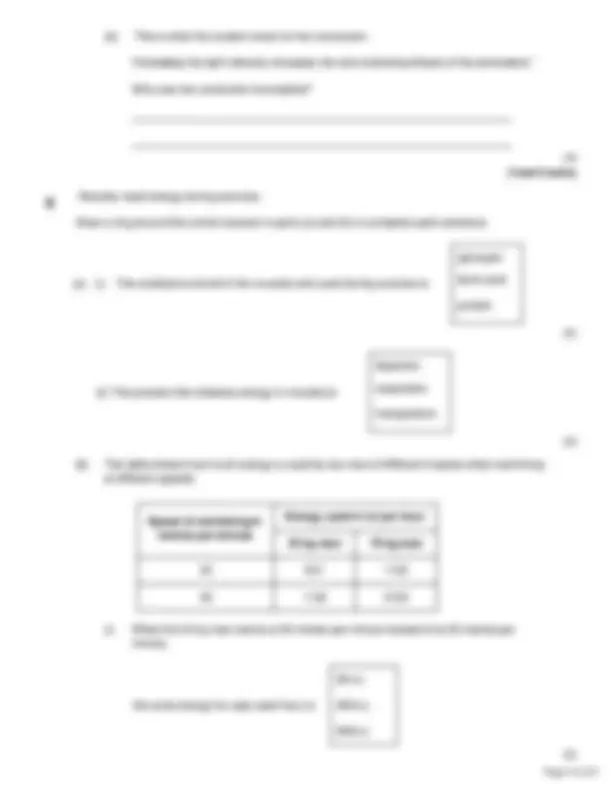
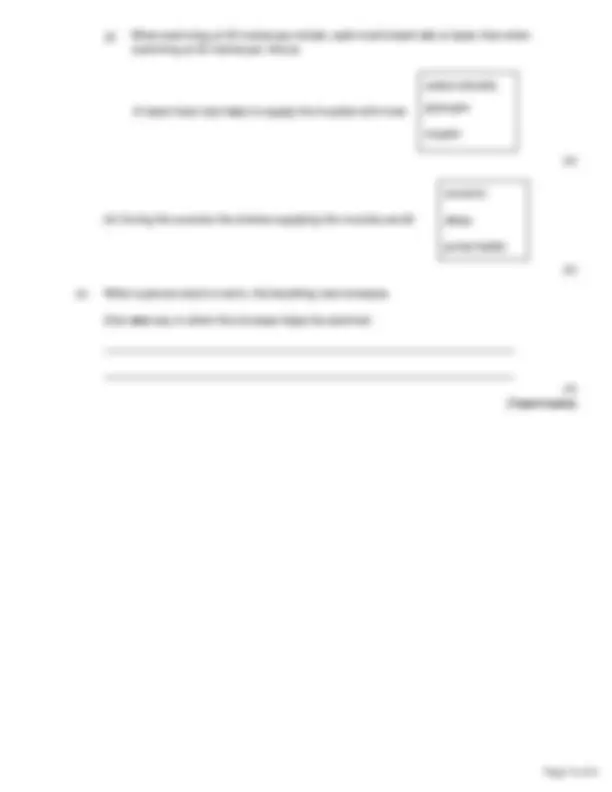
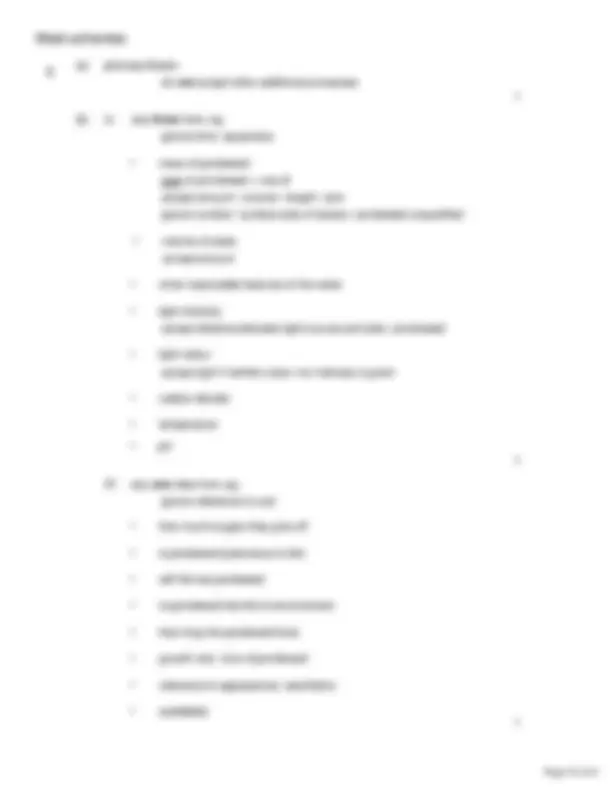
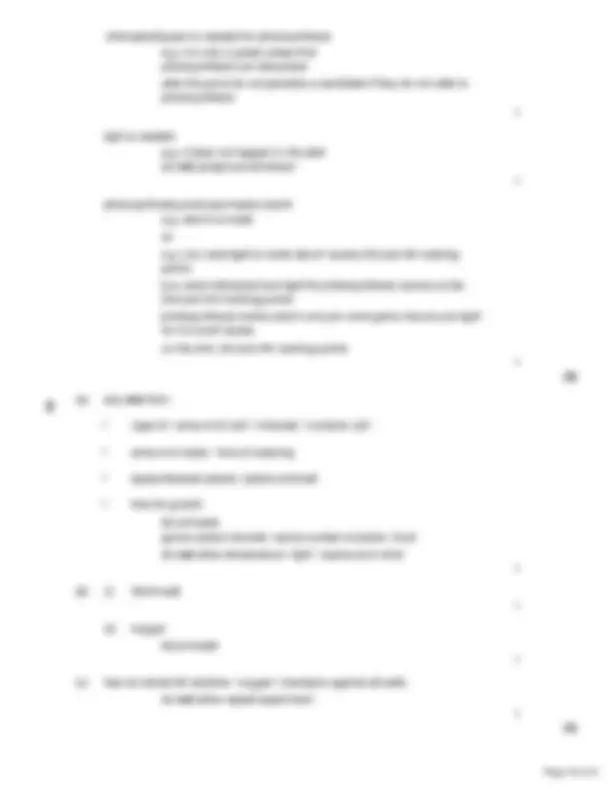
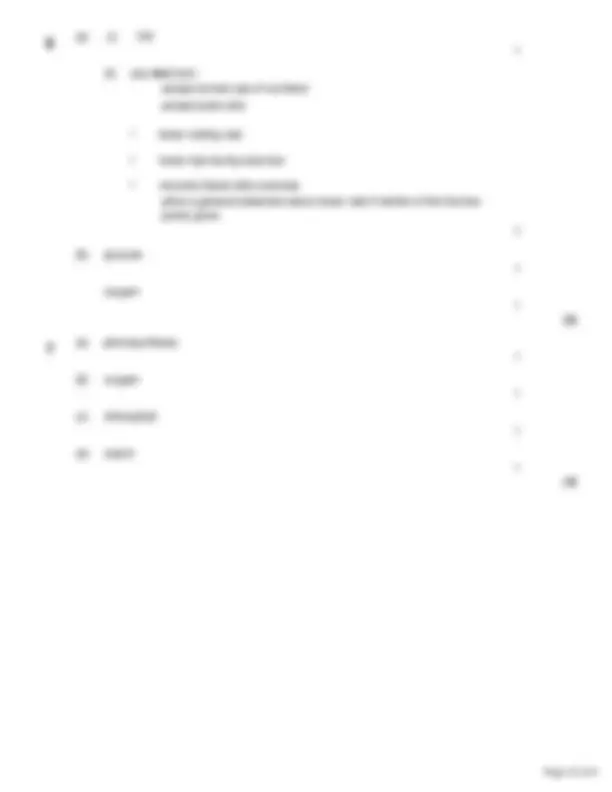
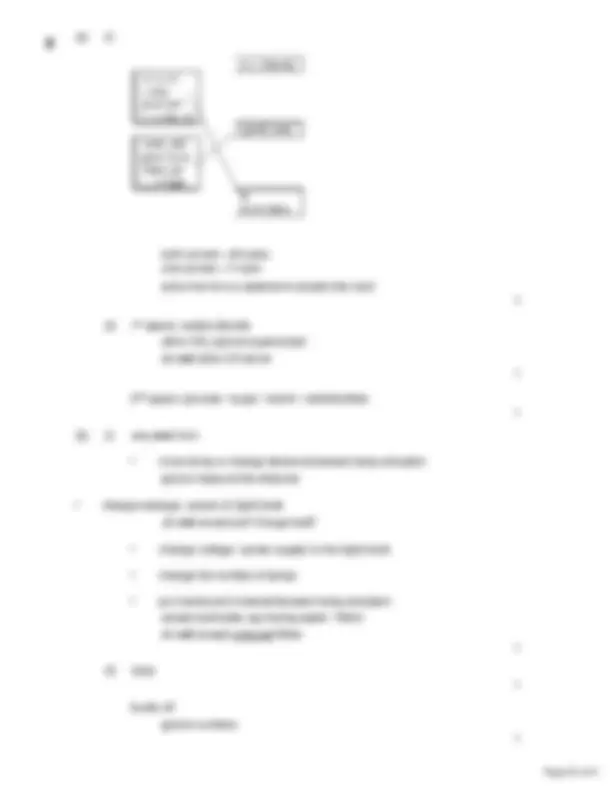
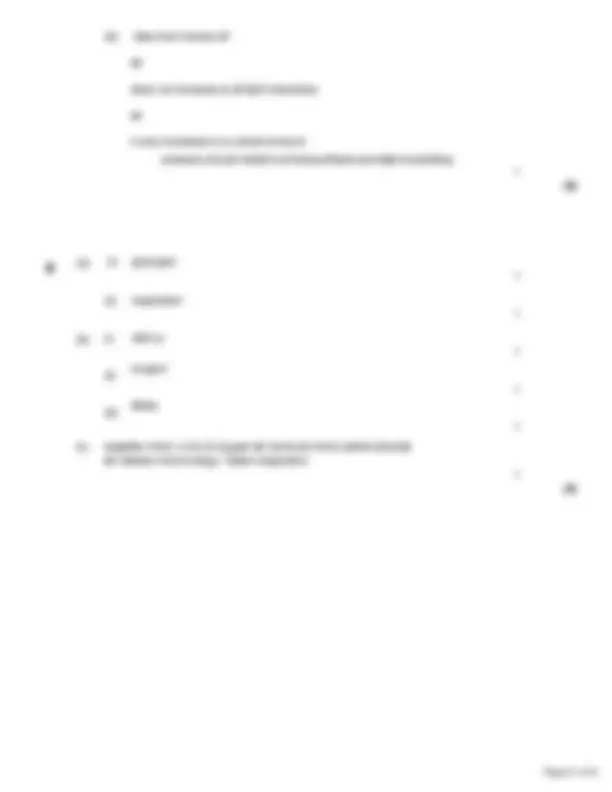


Study with the several resources on Docsity

Earn points by helping other students or get them with a premium plan


Prepare for your exams
Study with the several resources on Docsity

Earn points to download
Earn points by helping other students or get them with a premium plan
Community
Ask the community for help and clear up your study doubts
Discover the best universities in your country according to Docsity users
Free resources
Download our free guides on studying techniques, anxiety management strategies, and thesis advice from Docsity tutors
Information about an experiment conducted by a student to investigate the effect of three different types of pondweed (Elodea, Cabomba, and Egeria) and light intensity on oxygen production. The student counted the number of bubbles given off by each type of pondweed in a tube of water to measure oxygen production.
Typology: Lecture notes
1 / 21

This page cannot be seen from the preview
Don't miss anything!














People often grow pondweed in fishponds to oxygenate the water. (a) Name the process that the pondweed uses to produce oxygen.
(1) (b) A student investigated oxygen production in three different pondweeds, Elodea , Cabomba and Egeria. The student:
(i) The student said: “I suggest that people grow Cabomba in garden ponds to oxygenate the water fastest.” Give three variables the student should have controlled to make sure his conclusion was valid. Use information from the student’s method and the diagram.
(3) (ii) The three pondweeds all cost about the same. Suggest one other factor that people with fishponds might think about before deciding which type of pondweed to use. (1) (c) A person grows Cabomba in his pond. The Cabomba plants develop yellow leaves. Which mineral ion would stop the leaves turning yellow? (1) (Total 6 marks)
(d) Describe one way you could speed up photosynthesis. (1) (Total 10 marks) Paula is training for a marathon. When she runs, her heart beats faster than it does when she is resting. Complete the sentences, using words from the box. blood breathe carbon dioxide glucose heat nitrogen oxygen respire
When she is running, Paula‘s muscle activity increases. To do this, her muscle cells at a faster rate to give her more energy. Her muscles need to be supplied with and more quickly. Her heart beats faster to increase the flow of which carries the products and away from her muscles. (Total 6 marks) Photosynthesis takes place in green plants. (a) Name the substance that combines with water in photosynthesis. (1)
(b) Where does water enter the plant? (1) (c) Name two products of photosynthesis. (2) (d) Variegated leaves have areas that are green and areas that are white. Some students used variegated leaves to investigate photosynthesis.
Area of the leaf tested Start present after test covered uncovered Green area no yes White area no no Explain why starch was present in only one of the tests. (4) (Total 8 marks)
(i) To obtain the biggest mass of tomatoes, against which wall is it best to grow the tomato plants? Tick ( ) one box. North wall South wall East wall West wall (1) (ii) To^ obtain the biggest mass of tomatoes, which variety of tomato plant would it be best to grow? (1) (c) From the information in the table, the gardener’s test was not fair. Give one way in which the test was not fair. (1) (Total 4 marks)
An athlete did a 6 - month training programme. The graph shows the effect of the same amount of exercise on his heart rate before and after the training programme. (a) (i) What was the maximum heart rate of the athlete during exercise before the training programme? beats per minute (1)
(b) This process can be summarised by the equation: carbon dioxide + water → glucose + mineral salts light oxygen (1) (c) The energy needed for this process is trapped for the plant by chlorophyll glucose light (1) (d) Some of the food made by plants is stored as insoluble chlorophyll glucose starch (1) (Total 4 marks)
The diagram shows bushes in a hedge growing near to a house. The bushes were the same species and the same age. (a) (i) The student said, “I have noticed that the short bushes grow next to the house. I think that the more light the bushes get, the faster they will grow.” Draw lines to match each of the student’s statements to the correct term. Draw only two lines. (2)
(ii) Complete the word equation for photosynthesis.
(iii) This is what the student wrote for her conclusion. “Increasing the light intensity increases the rate of photosynthesis of the pondweed.” Why was her conclusion incomplete? (1) (Total 8 marks) Muscles need energy during exercise. Draw a ring around the correct answer in parts (a) and (b) to complete each sentence. (a) (i) The substance stored in the muscles and used during exercise is glycogen. lactic acid. protein. (1)
(ii) The process that releases energy in muscles is digestion. respiration. transpiration. Speed of swimming in metres per minute Energy used in kJ per hour 34 kg man 70 kg man 25 651 1155 50 1134 2103 (1) (b) The table shows how much energy is used by two men of different masses when swimming at different speeds. (i) When the 34 kg man swims at 50 metres per minute instead of at 25 metres per minute, the extra energy he uses each hour is 36 kJ. 483 kJ. 948 kJ. (1)
(ii) When swimming^ at 50^ metres^ per^ minute, each man’s heart rate^ is^ faster than when swimming at 25 metres per minute. A faster heart rate helps to supply the muscles with more carbon dioxide. glycogen. oxygen. (1) (iii) During the exercise the arteries supplying the muscles would constrict. dilate. pump harder. (1) (c) When a person starts to swim, the breathing rate increases. Give one way in which this increase helps the swimmer. (1) (Total 6 marks)
(c) magnesium / Mg accept iron / Fe ignore ion and +^ or- ignore nitrate 1 [6] (a) carbon water oxygen light chlorophyll starch 1 mark each 6
(b) leaf (or named part of leaf) or chloroplasts accept anywhere green do not credit chlorophyll unless qualified 1 (c) water through the roots or root hairs or by osmosis do not credit where the candidate is unclear about which is which 1 CO 2 through the leaf or stomata or by diffusion 1
(d) any one point: increased CO 2 concentration increased water supply increased temperature (up to a point) increased light (intensity) accept altered light quality by less green or increasing other colours accept increased duration of exposure to light do not credit sun or sunshine accept CO 2 fromrespiration 1 [10] (a) respire 1 2 blood 1 2 [6]
(a) carbon dioxide/CO 2
(b) through the roots/root hairs do not accept leaves 1 (c) oxygen 1 sugar/glucose/other named sugar/starch/carbohydrate 1 (d) award one mark for each mark point n.b. accept chloroplast for chlorophyll n.b. credit the candidate who answers in terms of the white areas of the leaf chlorophyll is green e.g. green areas have chlorophyll 1
(a) (i) 150
(ii) any two from: accept correct use of numbers accept pulse rate
(a) (i) both correct = 2 marks one correct = 1 mark extra line from a statement cancels the mark 2
(ii) 1 st^ space: carbondioxide allow CO 2 (ignore superscript) do not allow CO alone 1 2 nd^ space: glucose / sugar / starch / carbohydrate 1 (b) (i) any one from: